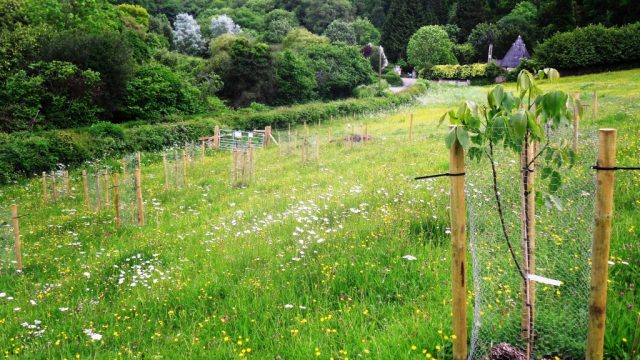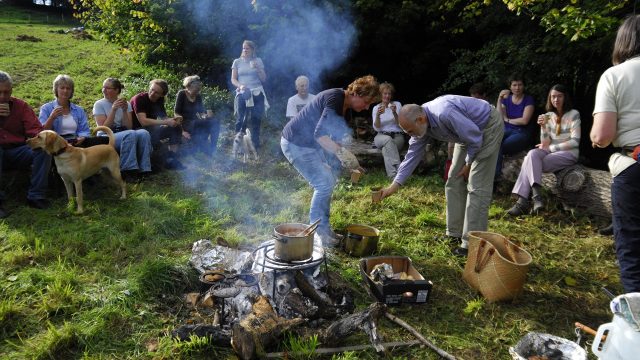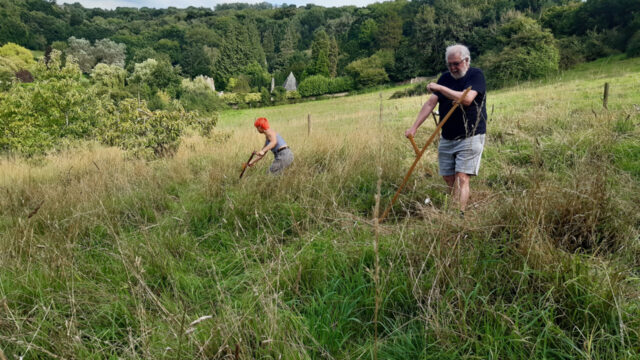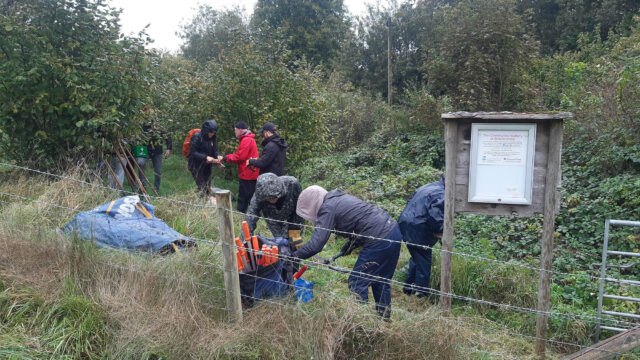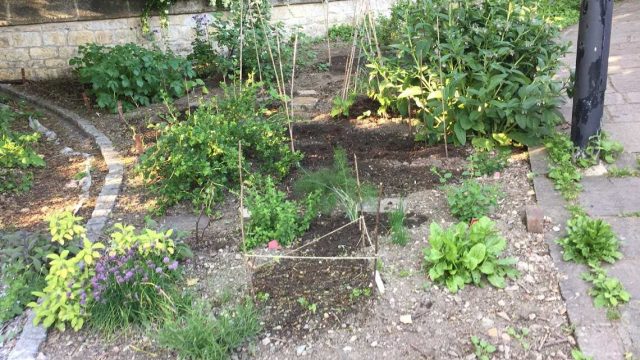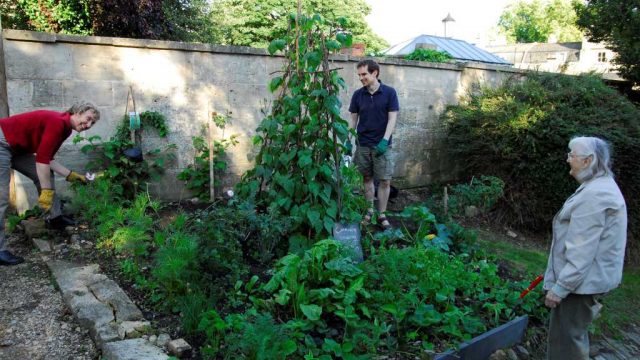Transition Bath is cultivating little unused spaces around the city. The main community growing focus is Smallcombe Nuttery in Horseshoe Walk, but we also maintain a community garden in Park Street and a space in Gravel Walk. Find out about these projects here.
If you have any ideas for neglected patches of land near you that could be cultivated, we can help you create a community garden for food, wildlife and beauty! Contact us to join our guerrilla gardeners to create small gardens in the city.
Smallcombe Nuttery
The nuttery is planted on National Trust land, beside the Skyline Walk at Smallcombe and is a thriving example of the way that Transition Bath cultivates unused spaces around the city.
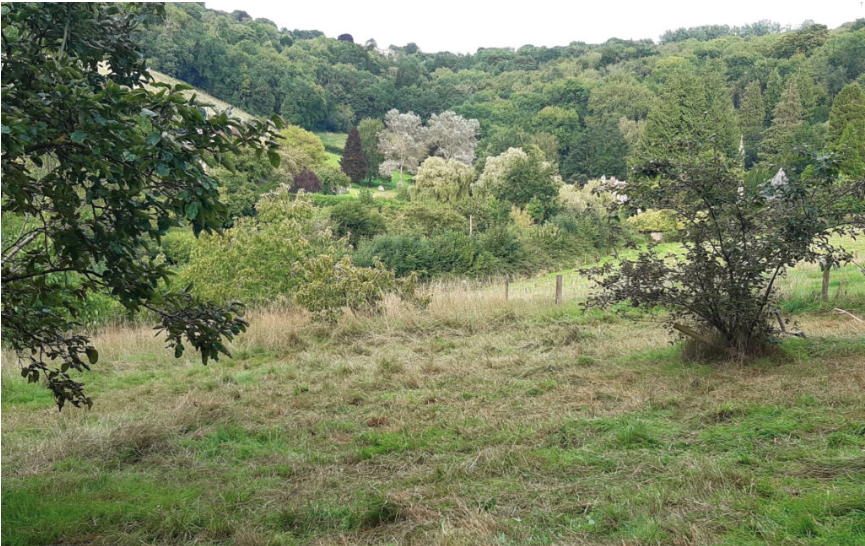
History of Smallcombe Nuttery
In August 2009, the National Trust offered Transition Bath the opportunity to lease an area of National Trust land at Smallcombe, As the NT had already planted an apple orchard on the opposite hill, the decision was to create a nut orchard, or nuttery. Information was collected about suitable nuts and their growing conditions, and possible suppliers identified. In June 2010, a community picnic was held to introduce the community nuttery plan to local residents. A kissing gate, a fence and gate were installed with the help of students from Norton Radstock College. Between October and the new year, a number of generous individuals sponsored trees, and a London-based organisation, Trees for Cities, awarded Transition Bath a grant of £250. By Christmas there were enough funds to order the trees.
In February 2011, despite the rain, over 40 volunteers turned up to plant trees. There were 25 cobnuts, 3 almonds, 3 sweet chestnuts and 6 walnuts planted. The trees were mulched with cardboard and compost, and encircled with tree guards to protect them from animals. Later that year a fruiting hedge was planted along the new fence and in 2012 a quince, medlar and mulberry tree were added.
The idea behind the nuttery is that it promotes locally grown and processed food and makes it available to the community. Local food is fresher, and is not treated for artificial longevity, and consumers can be more knowledgeable about the provenance of food, and confident in the (often artisanal) methods of production.
You can see a scrapbook history of The Nuttery here.
Today’s nuttery
The nuttery had been neglected during the pandemic and needed some attention, and 2023 saw a new focus of activity. In June, Transition Bath was awarded a grant from the West of England Combined Authority’s Community Pollinator Fund. Since receiving the funding, activities have included doing a site survey (with the help of Bath Naturalists) to identify any interesting plants and wildlife and ensure that they are not damaged; volunteers clearing brambles from the lower end and scything the top end of the Nuttery; and getting advice from an Avon Wildlife Trust Community ecologist about what can be done to plant/sow in the more open areas to attract pollinators.
The bramble clearing in October 2023 was done by volunteers from the Community Action Network (CAN) and Princes Trust volunteers to improve access and create a more wildlife-friendly area. The clearing exercise exposed the ground underneath the brambles in order to allow the latent wildflower seeds to grow up through the grass to create a more pollinator-friendly area. The bramble cuttings were piled up along the far edge of the site to create a habitat for wildlife.
Smallcombe Nuttery has trees and plants including cobnuts, almonds, sweet chestnuts and walnuts as well as quince, medlar and mulberry, a fruiting hedge, blackcurrants and gooseberries. The nuts and berries are grown for community use and anyone is invited to come and take a fair share when they are ripe (generally from August to September). The nuttery is right next to the Bath Skyline Walk, and there is easy pedestrian access from Horseshoe Walk.
The nuttery can only be reached on foot. Download our map for directions.
Gravel Walk
This small neglected space bordering Gravel Walk in Royal Victoria Park was turned into a community fruit and vegetable patch by a team of guerrilla gardeners. Its city centre location, right on the main tourist trail, makes it a good place for demonstrating productive growing – and being very small, it can be maintained through occasional workdays.
